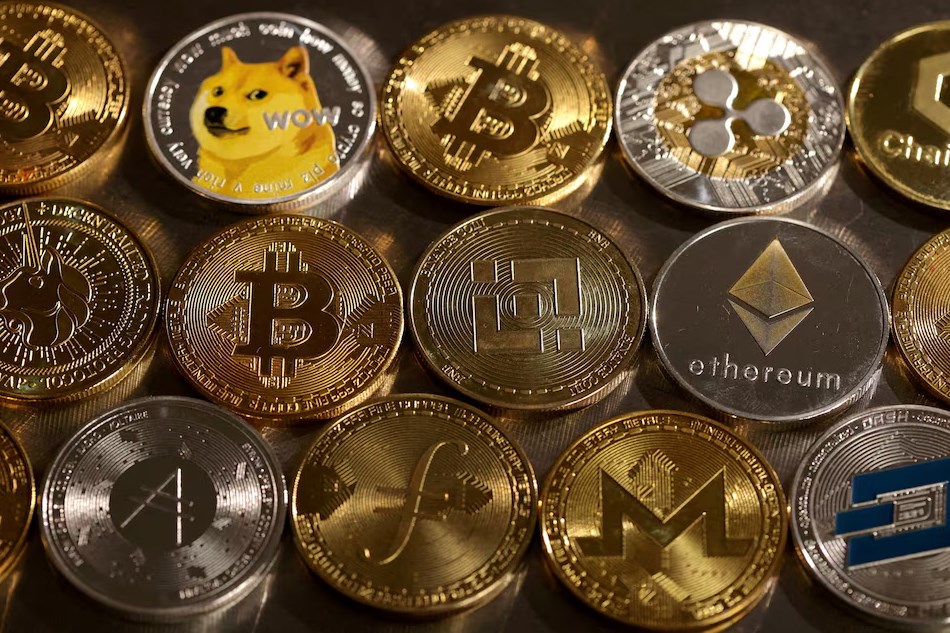What are the mainstream currencies of virtual currencies?
- DDDOriginal
- 2024-04-17 09:59:301197browse
The mainstream virtual currency market includes: Bitcoin, Ethereum, Binance Coin, Solana, Cardano, Dogecoin, Ripple, Polkadot, Avi and Horseshoe, among which Bitcoin has the absolute dominance status, Ethereum is a smart contract platform, Binance Coin is an exchange cryptocurrency, Solana provides high-performance blockchain, Cardano is based on scientific research, Dogecoin is a meme coin, and Ripple is used for cross-border payments. , Polkadot is a multi-chain platform, Avi focuses on smart contract development, and Horseshoe is an algorithmic stable currency.

Mainstream virtual currency
The virtual currency market is huge and growing, and some of them have become mainstream and widely used recognized and used. Listed below are some of the most popular mainstream virtual currencies:
1. Bitcoin (BTC)
- Market dominance: Bitcoin is the first created and most well-known virtual currency, and it occupies an absolutely dominant position in the market.
- Key Features: Decentralized, secure blockchain network with limited total supply (21 million).
2. Ethereum (ETH)
- Smart contract platform: Ethereum is not only a virtual currency, It is also a platform for creating and running smart contracts.
- Key Features: Developments in the areas of programmability, decentralized applications (dApps), and decentralized finance (DeFi).
3. Binance Coin (BNB)
- Exchange Cryptocurrency: BNB is a Binance cryptocurrency exchange The exchange’s native token is used to pay transaction fees and other ecosystem functions.
- Key Features: Usability, low transaction fees, and a wide range of applications in the Binance ecosystem.
4. Solana (SOL)
- High-Performance Blockchain: Solana provides lightning-fast Fast and low-cost transactions make it a popular choice for DeFi and Web3 applications.
- Key Features: Scalability, high throughput and low transaction fees.
5. Cardano (ADA)
- Science-driven blockchain: Cardano is a Blockchain projects based on scientific research and peer review.
- Key Features: Scalability, smart contract capabilities and focus on sustainability.
6. Dogecoin (DOGE)
- Meme Coin: Dogecoin was originally a joke coin , but has gained a large following.
- Key Features: Unlimited supply, very low transaction fees, widely used in social media and crypto communities.
7. Ripple (XRP)
- Cross-border payments: Ripple is mainly used to facilitate cross-border payments , to move funds quickly and cheaply.
- Key Features: Efficient transaction processing, low transaction fees and cooperation with financial institutions.
8. Polkadot (DOT)
- Multi-chain platform: Polkadot is a platform that allows different blockchains Interconnected multi-chain platforms create a unified and interoperable ecosystem.
- Key Features: Interoperability, governance and support for multiple parachains.
9. AVAX(AVAX)
- Smart contract platform: AVAX is a company focusing on smart contract development A blockchain platform that provides fast, low-cost and scalable transactions.
- Key Features: Scalability, low latency and support for dApps.
10. Horseshoe (LUNA)
- Algorithmic Stablecoin: Horseshoe is an algorithmic stablecoin designed to Adjust its supply to stabilize its price.
- Key Features: Price stability, earning through staking, and integration with other dApps in the Terra ecosystem.
The above is the detailed content of What are the mainstream currencies of virtual currencies?. For more information, please follow other related articles on the PHP Chinese website!
Related articles
See more- Analysis of the application prospects of blockchain technology in the field of network security
- Binance releases Web3 wallet, an article details its highlights
- OKX cryptocurrency exchange has officially been granted a VASP license by the Dubai authorities to further expand into the Middle East market
- An article to understand the risks of algorithmic stablecoins in detail?
- How much is a Dogecoin?

